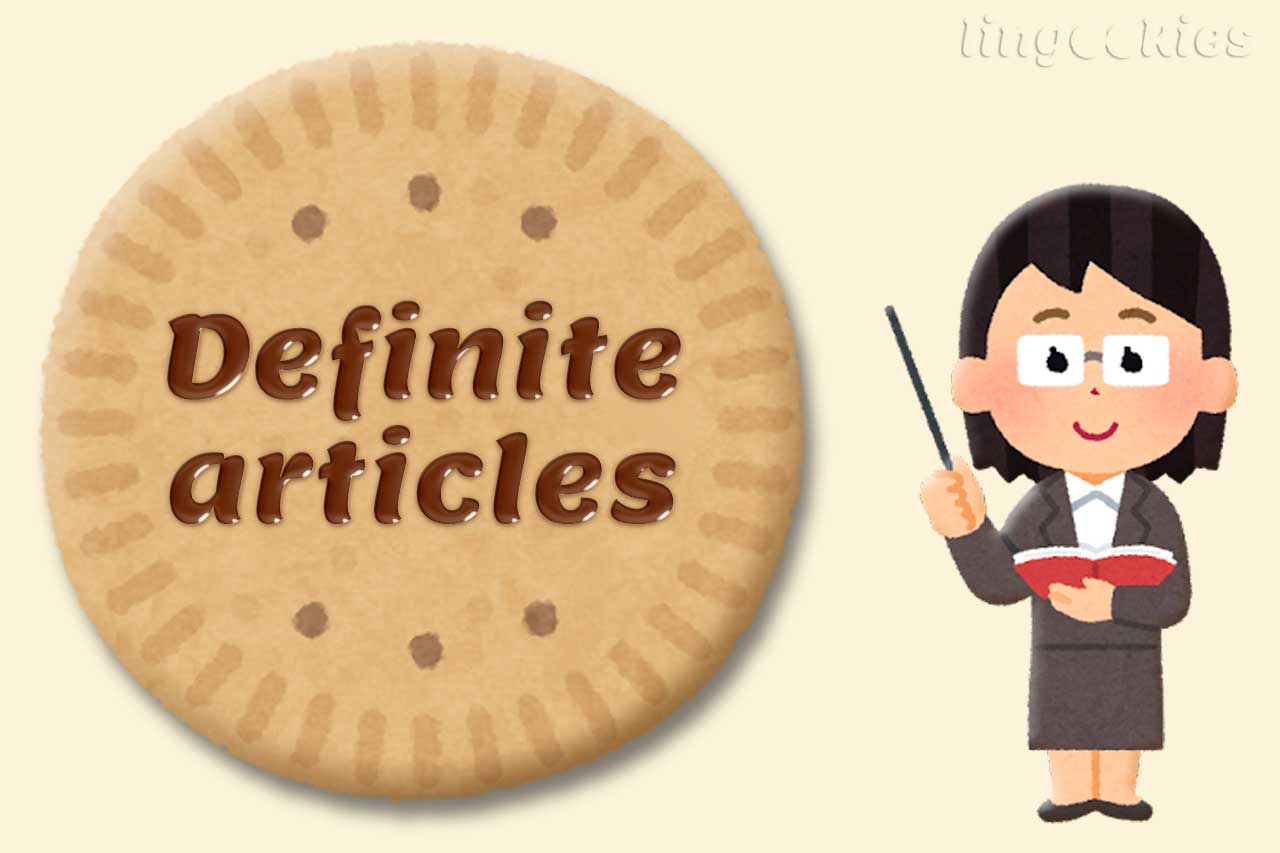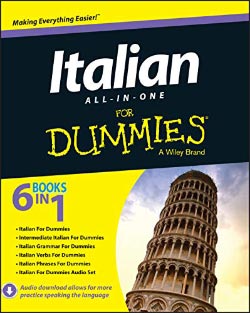What are the Italian definite articles? English has only one: the. Italian has… well, a few.
How many definite articles are there in Italian? How and when do you use them? In this lesson, you will find the answers to all these questions.
Il cane
The dog
La donna
The woman
I tavoli
The tables
Le sedie
The chairs
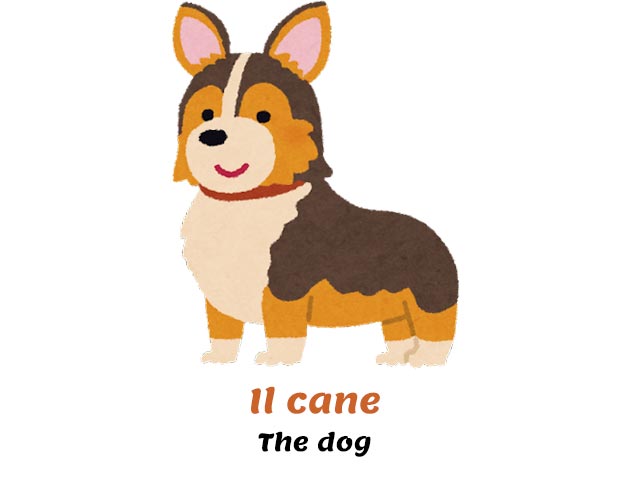
Let’s start with the explanation right away!
Definite articles in Italian
Italian definite articles are used to refer to a specific person or thing or a group of people/things, whether singular or plural.
All definite articles in Italian are placed before the noun. If there’s already an adjective before the noun, they go before it.
Il gatto dorme.
The cat sleeps.
La bambina guarda la TV.
The little girl watches the TV.
I cani abbaiano.
The dogs are barking.
La vecchia signora riposa.
The old lady takes a rest.

Italian definite articles can be either masculine or feminine, depending on the gender of the noun they precede. Definite articles in Italian can also be either singular or plural.
Remember: all Italian articles match the gender and number of the noun.
This means that there are four possible groups of articles in total:
- masculine singular articles
- masculine plural articles
- feminine singular articles
- feminine plural articles
Before we dive into each group, let’s write down all the possible Italian definite articles in a table.
| Singular | Plural | |
|---|---|---|
| Masculine | il, lo, l’ | i, gli |
| Feminine | la, l’ | le |
This is why we say il gatto and la bambina, because gatto is a masculine singular noun, while bambina is a feminine singular noun. Gatto then needs a masculine singular article (il), and bambina needs a feminine singular article (la).
There are rules that dictate why gatto specifically needs the il article and not lo, for example, and we will see why in a moment.
Everything clear? Tutto chiaro? Perfetto! Now let’s take a closer look at these article groups one by one.
Title: Italian All-in-One For Dummies
Language: English / Italian
Publisher: For Dummies
Pages: 672
Learn to speak Italian like a native? Easy.
Italian All-in-One For Dummies appeals to those readers looking for a comprehensive, all-encompassing guide to mastering the Italian language. It contains content from all For Dummies Italian language instruction titles, including Italian For Dummies, Intermediate Italian For Dummies, Italian Verbs For Dummies, Italian Phrases For Dummies, Italian Grammar For Dummies, and Italian For Dummies Audio Set.
Masculine singular articles
As you can see in the table above, Italian has 3 masculine singular definite articles: IL, LO and L’.
When to use “il”
IL is used before any masculine noun or adjective that begins with a consonant. There are a few exceptions to this rule:
- s+consonant (st-, sp-, sb-, sv-, sc- etc.)
- “sh” sound (sci-, scia-, scio- etc.)
- z-, gn-, ps-, pn-, semi-vowel i and x–
- h–
For example, a masculine noun like serpente, snake, becomes il serpente, the snake.
Il serpente sibila.
The snake hisses.
The same thing applies to many other nouns that begin with a consonant, such as topo, libro or divano.
Il topo mangia.
The mouse eats.
Il libro è breve.
The book is short.
Il divano è bianco.
The sofa is white.
Il weekend è lontano.
The weekend is far away.
Il grande giorno è arrivato.
The big day has come.
| Article | Noun |
|---|---|
| IL | serpente |
| IL | topo |
| IL | libro |
| IL | divano |
| IL | weekend |
| IL | grande giorno |
However, a noun like studio does not become il studio because it begins with s+consonant (st-), which is one of the exceptions to our rule. The same goes for sciroppo (sh- sound), zoo (z) and psicologo.
What about with these nouns? Which article should we use? This is where “lo” comes in.
When to use “lo”
LO is used in front of any masculine noun or adjective that begins with:
- s+consonant (st-, sp-, sb-, sv-, sc- etc.)
- “sh” sound (sci-, scia-, scio- etc.)
- z-, gn-, ps-, pn-, semi-vowel i and x–
That’s right: these are the same exceptions to the “il” article rule, minus nouns beginning with h-! (We still need to cover all the vowel sounds, I’ll get to those in a minute.)
So studio becomes lo studio. And iodio, which is a word beginning with a semi-vowel (i/y/j+vowel), becomes lo iodio and so on.
Lo studio è sporco.
The study is dirty.
Lo sciroppo è dolce.
The syrup is sweet.
Lo zoo è grande.
The zoo is big.
Lo psicologo lavora.
The psychologist works.
Lo xilofono è qui.
The xylophone is here.
Lo yogurt è magro.
The yogurt is low-fat.
Lo stretto passaggio è nascosto.
The narrow pathway is hidden.
(Il passaggio —> Lo stretto passaggio)

Normally you would say il passaggio because passaggio starts with a p-, but we’ve seen that for each of the four groups of Italian definite articles you have to take into account the first letters of any word that follows the article.
Stretto, narrow, starts with s+consonant.
If there’s an adjective before a noun, you’ll have to look at the first letter of the adjective itself, not the first letter of the noun.
| Article | Noun |
|---|---|
| LO | studio |
| LO | sciroppo |
| LO | zoo |
| LO | psicologo |
| LO | xilofono |
| LO | yogurt |
| LO | stretto passaggio |
So how do the masculine Italian definite articles work with vowels?
When to use “l’ “
L’ is used in front of any masculine noun or adjective that begins with… you guessed it, a vowel. It’s also used for nouns beginning with h-.
With one caveat:
- nouns beginning with a semi-vowel (i+vowel, j+vowel or y+vowel) take lo instead
What does the apostrophe ‘ stand for in l’?
It’s the shortened form of lo. But it sounds really awkward to say lo albero or lo elefante, so l’ is used instead.
Now, what are some masculine nouns that start with a vowel? Albero, tree. Which becomes l’albero, the tree! Or orso, bear, which becomes l’orso, the bear.
You don’t say: lo albero, lo orso.
There are 5 vowels in Italian: A, E, I, O, U. Let’s see an example for all of them.
L’albero è alto.
The tree is tall.
L’elefante beve.
The elephant drinks.
L’indirizzo è sbagliato.
The address is wrong.
L’orso gioca.
The bear plays.
L’uomo vive a Londra.
The man lives in London.
L’hotel è enorme.
The hotel is huge.
| Article | Noun |
|---|---|
| L’ | albero |
| L’ | elefante |
| L’ | indirizzo |
| L’ | orso |
| L’ | uomo |
| L’ | hotel |
| IL | giovane albero |
Now that we’ve seen how the Italian definite articles work in the singular, let’s see how they work in the plural.
Masculine plural articles
There are only two definite articles in Italian for masculine plural nouns: I and GLI.
Once you get used to how the singular articles work you will have no problem deciding when to use i or gli with plural nouns, because…
- nouns or adjectives that use il in the singular use i in the plural
- nouns or adjectives that use either lo or l’ in the singular use gli in the plural
Remember!
IL > I
LO/L’ > GLI
Now let’s make some examples. The singular noun is provided in parentheses.
I serpenti sibilano.
The snakes hiss.
(Il serpente)
I topi mangiano.
The mice eat.
(Il topo)
I libri sono brevi.
The books are short.
(Il libro)
Gli studi sono sporchi.
The studies are dirty.
(Lo studio)
Gli zoo sono grandi.
The zoos are big.
(Lo zoo)
Gli psicologi lavorano.
The psychologists work.
(Lo psicologo)
Gli alberi sono alti.
The trees are high.
(L’albero)
Gli elefanti bevono.
The elephants drink.
(L’elefante)
Gli hotel sono enormi.
The hotels are huge.
(L’hotel)
I giovani alberi sono caduti.
The young trees have fallen.
(Gli alberi –> I giovani alberi)

| Article | Noun |
|---|---|
| I | serpenti |
| I | topi |
| GLI | zoo |
| GLI | psicologi |
| GLI | elefanti |
| GLI | alberi |
| I | giovani alberi |
Il dio, which means the god, is irregular in the plural: gli dèi, the gods, instead of i dèi.
It’s now time to look at the Italian definite articles for feminine nouns. Let’s see them right away!
Feminine singular articles
The definite articles in Italian for feminine nouns are easy to learn. In the singular, there are only two of them: LA and L’.
When to use “la”
LA is used for any feminine noun or adjective that begins with:
- a consonant
- semi-vowel i/y/j
- h
- w
For example, a feminine noun like lampada, lamp, becomes la lampada, the lamp.
La lampada è accesa.
The lamp is on.
The noun iena translates to hyena and it begins with a semi-vowel i+vowel. So we say la iena instead.
You don’t say: l’iena. It sounds terrible!
La iena ride.
The hyena laughs.
Hall is feminine, so we say la hall.
La hall è affollata.
The hall is crowded.
And so on for all the other consonants: sedia, coperta, porta.
La sedia è rotta.
The chair is broken.
La coperta è di lana.
The blanket is made of wool.
La porta è aperta.
The door is open.
| Article | Noun |
|---|---|
| LA | lampada |
| LA | iena |
| LA | hall |
| LA | sedia |
| LA | coperta |
| LA | porta |
Now let’s see when you use l’, which is the shortened form of la.
When to use “l’ “
L’ is used in front of any feminine noun or adjective that begin with… you guessed it again, a vowel.
Always remember that the semi-vowel i/y/j behaves like a consonant!
Let’s look at a few examples with A, E, I, O and U.
L’arancia è matura.
The orange is ripe.
L’erba è verde.
The grass is green.
L’isola è grande.
The island is big.
L’orma è profonda.
The footprint is deep.
L’unghia è ben curata.
The nail is well kept.
La migliore amica che abbia mai avuto!
The best female friend I’ve ever had!
(L’amica –> La migliore amica)
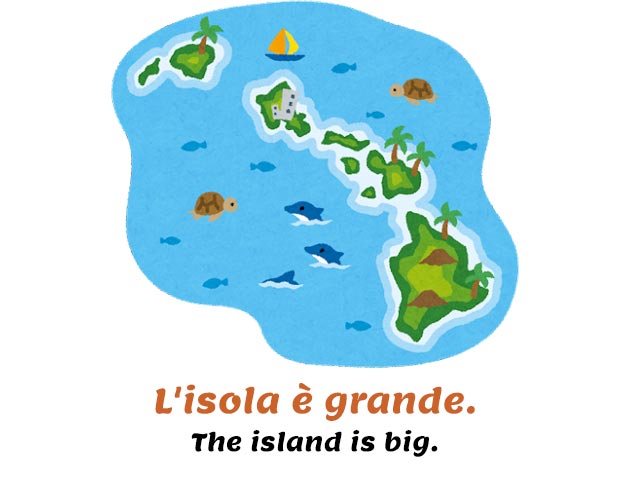
As always, remember that each Italian article must agree with the letter of the following word, whether it is a noun or an adjective.
| Article | Noun |
|---|---|
| L’ | arancia |
| L’ | erba |
| L’ | isola |
| L’ | orma |
| L’ | unghia |
| LA | migliore amica |
Now for the easiest Italian definite article of all, le.
Feminine plural articles
You can’t really go wrong, because there’s only one article to choose from: LE.
When to use “le”
LE is used in combination with all plural feminine nouns and adjectives, no matter what letter they start with.
Yes, it’s that simple.
So you have la lampada which becomes le lampade, la iena which becomes le iene. Or l’orma, the footprint, which becomes le orme, the footprints.
Le lampade sono accese.
The lamps are on.
Le coperte sono di lana.
The blankets are made of wool.
Le hall sono affollate.
The halls are crowded.
Le orme sono profonde.
The footsteps are deep.
Le unghie sono ben curate.
The nails are well kept.
Le migliori amiche che abbia mai avuto!
The best friends I’ve ever had!
| Article | Noun |
|---|---|
| LE | lampade |
| LE | coperte |
| LE | hall |
| LE | orme |
| LE | unghie |
| LE | migliori amiche |
Phew! We have seen all four types of Italian definite articles!
But knowing which articles there are isn’t much use if you don’t know when to use them in a sentence. Do all nouns that refer to a specific person or thing need a definite article, or can they get by without one?
Read on and you’ll find out!
When to use the Italian definite articles
We have already said that definite articles in Italian are used with a specific person or thing and with groups of people/things. Let me explain this in more detail. Consider this example:
Dogs are cute.
If you don’t already know, the Italian translation for dogs is cani.
Now, how would you translate dogs in this sentence? With or without the definite article?
Remember what you have learned: Italian definite articles are also used for groups of things. Generic classes of people and things.
English nouns don’t need an article in this case. Italian nouns do.
I cani sono carini.
Dogs are cute.
You can’t say: cani sono carini.
Other examples are:
Non mi piacciono i gatti.
I don’t like cats.
(“I don’t like the cats“)
Gli ippopotami sono aggressivi.
Hippos are aggressive.
(“The hippos are aggressive“)
Gli Italiani sono allegri.
Italians are happy.
(“The Italians are happy“)
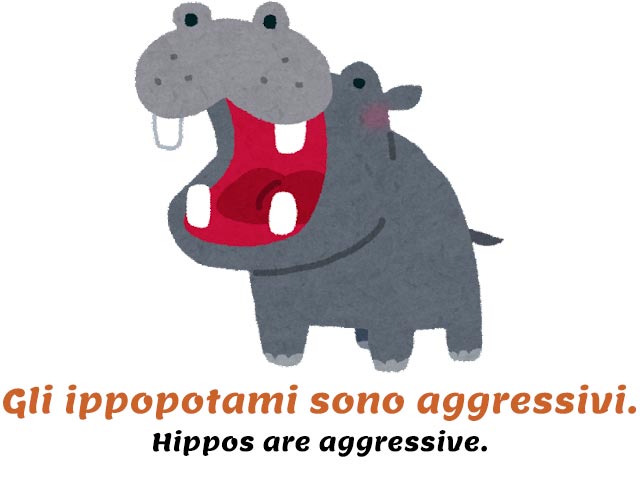
These sentences don’t refer to a specific group of cats or hippos or Italian people, but to all cats and hippos and Italian people as a general class.
Italian definite articles and possessives
Another BIG difference between the two languages is that Italian possessives and pronouns must be preceded by an article. This is unheard of in English.
Il mio cane è carino.
My dog is cute.
This literally means the my dog is cute.
Questo è il mio cane.
This dog is mine.
And this means this is the my dog.
Other examples are:
La mia amica si chiama Giorgia.
My friend is called Giorgia.
(“The my friend“)
I tuoi genitori vivono a Roma.
Your parents live in Rome.
(“The your parents“)
Le nostre scarpe sono nere.
Our shoes are black.
(“The our shoes“)
A popular exception is relatives as a singular noun.
Mia zia ha 66 anni.
My aunt is 66 years old.
Mia mamma ha 42 anni.
My mom is 42 years old.
Mio cugino si chiama Andrea.
“My cousin is called Andrea.”
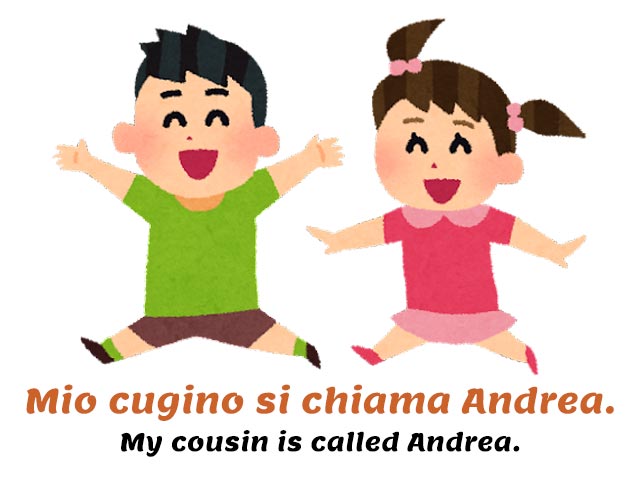
This exception doesn’t apply to plurals: i miei genitori, the my parents, i miei zii, the my uncles, i miei fratelli, the my brothers, and so on.
Italian definite articles with countries and geographic locations
Unlike English, definite articles in Italian precede names of countries, regions, and other places.
L’America è un continente.
America is a continent.
La Germania è una nazione.
Germany is a country.
La Lombardia si trova nel Nord Italia.
Lombardy is in northern Italy.
Strangely enough, you won’t need to add an article with the preposition IN.
Mio cugino vive in America.
My cousin lives in America.
Quante persone vivono in Germania?
How many people live in Germany?
Italian definite articles with the days of the week
As in English, days of the week don’t need an article in front of them.
However, if you’re talking about a specific day, you need to add an article if there’s an adjective before the day.
Sono andato al mare lunedì scorso.
I went to the seaside last Monday.
(No article, the adjective comes after)
Sono andato al mare lo scorso lunedì.
I went to the seaside last Monday.
(Needs an article, the adjective comes before)
Telling the time
Italian definite articles are also used to tell the time.
Sono le tre del pomeriggio.
It’s 3 in the afternoon.
(“They are the 3 of the afternoon“)
Sono le nove di mattina.
It’s 9 in the morning.
(“They are the 9 of morning“)
Sono le otto di sera.
It’s 8 in the evening.
(“They are the 8 of evening“)
È l’una di notte.
It’s 1 am.
(“It’s the 1 of night“)

Italian definite articles to describe appearance
Definite articles in Italian are used to describe parts of the body.
Ho gli occhi marroni.
I have brown eyes.
(“I have the eyes brown“)
Ho i capelli biondi.
I have blonde hair.
(“I have the blonde hair“)
Apart from these differences, the Italian definite articles behave very much like the English definite article the. If you feel like using the in English, you should use it in Italian too. Just make sure you choose the correct article in Italian.
FAQs on the Italian definite articles
What are the definite articles in Italian?
They are:
– il, lo (masculine singular)
– la (feminine singular)
– i, gli (masculine plural)
– le (feminine plural)
What are the masculine definite articles in Italian?
They are:
– il, lo (masculine singular)
– i, gli (masculine plural)
What are the feminine definite articles in Italian?
They are:
– la (feminine singular)
– le (feminine plural)
What are the definite articles called in Italian?
They are called articoli determinativi, from the singular articolo determinativo.
When do you use definite articles in Italian?
You use definite articles in Italian with a specific person or thing and with generic groups of people/things. You also use a definite article before possessive adjectives, countries, and to tell the time.
And that’s the end of our guide to the Italian definite articles! If you still have any doubts, feel free to leave a comment.
Now what?
Now that you’ve seen how the Italian definite articles work, you might want to keep learning Italian online with these free Italian resources:
- Useful Italian Words Series
- Common Italian Phrases Series
- Italian grammar lessons and tricks
- Italian idiomatic expressions
Or you might also want an excellent offline Italian grammar resource to take with you at all times (Amazon).
❤️ If you liked this guide on the Italian definite articles, consider sharing it with your social media friends who are also studying Italian.

